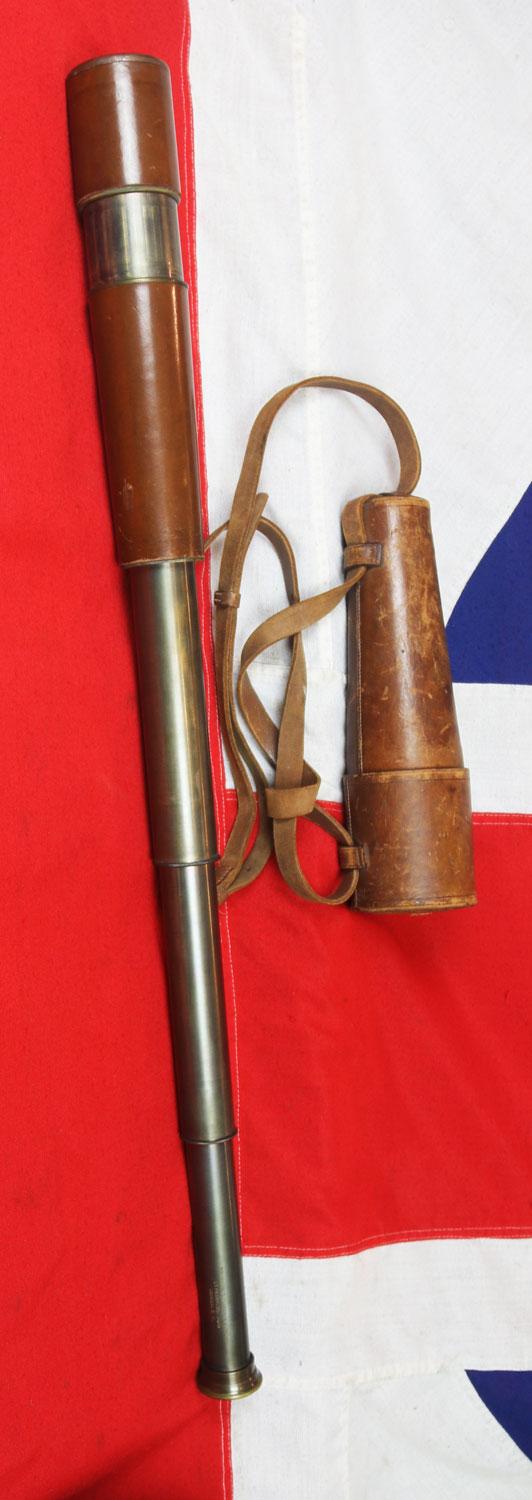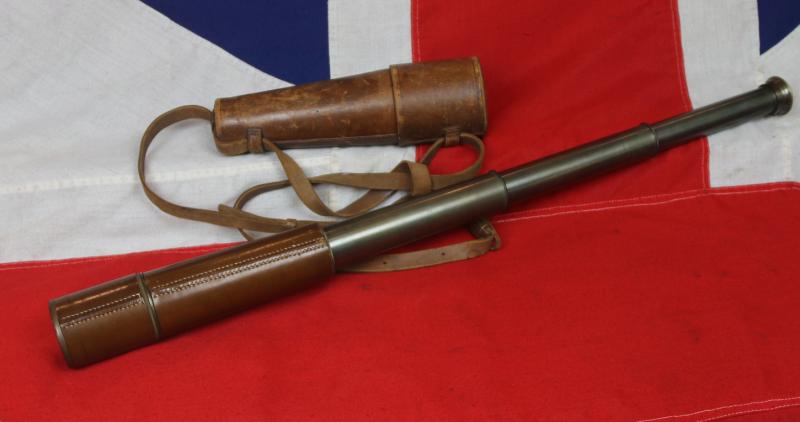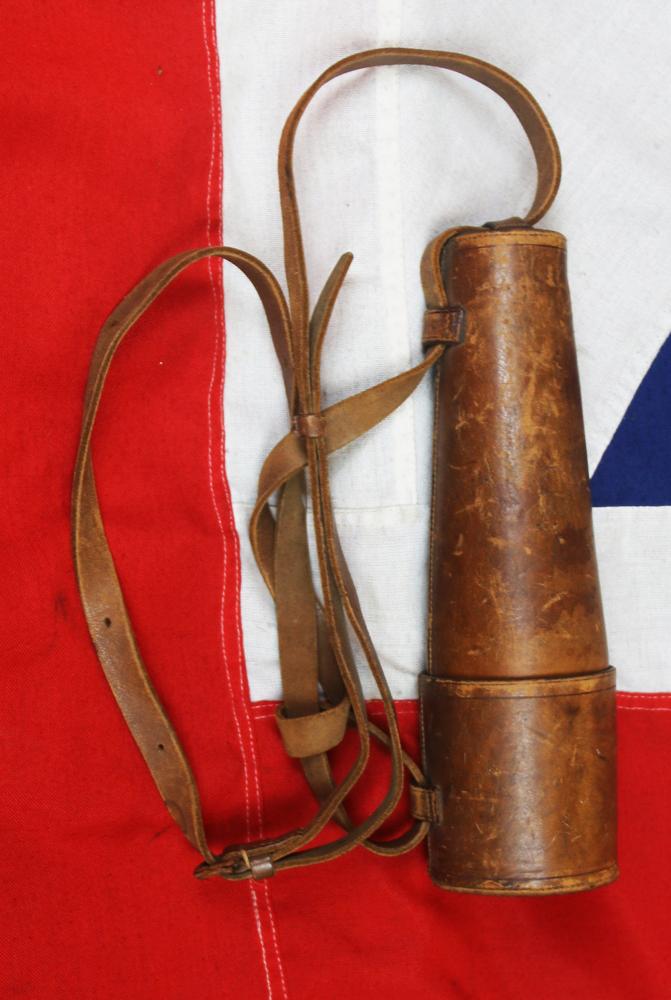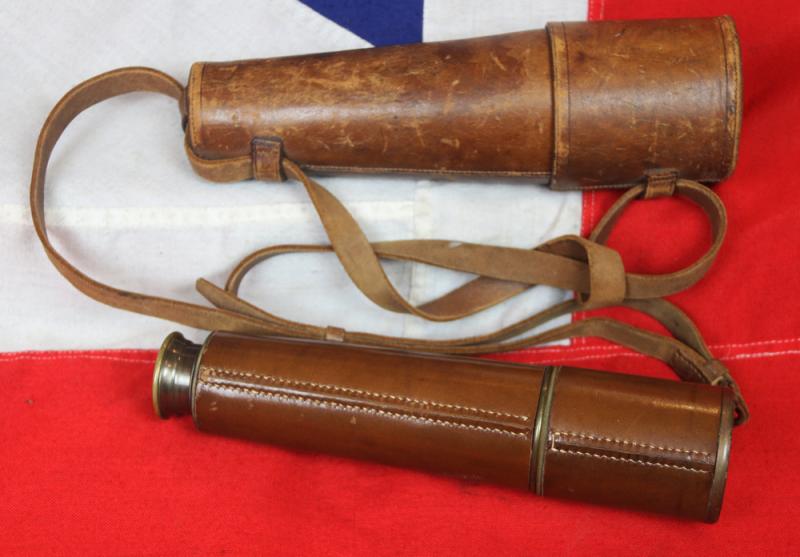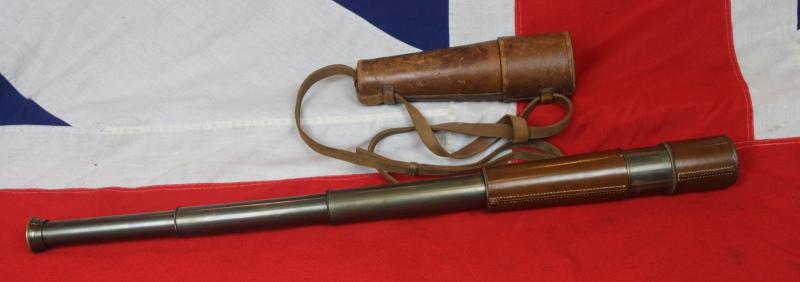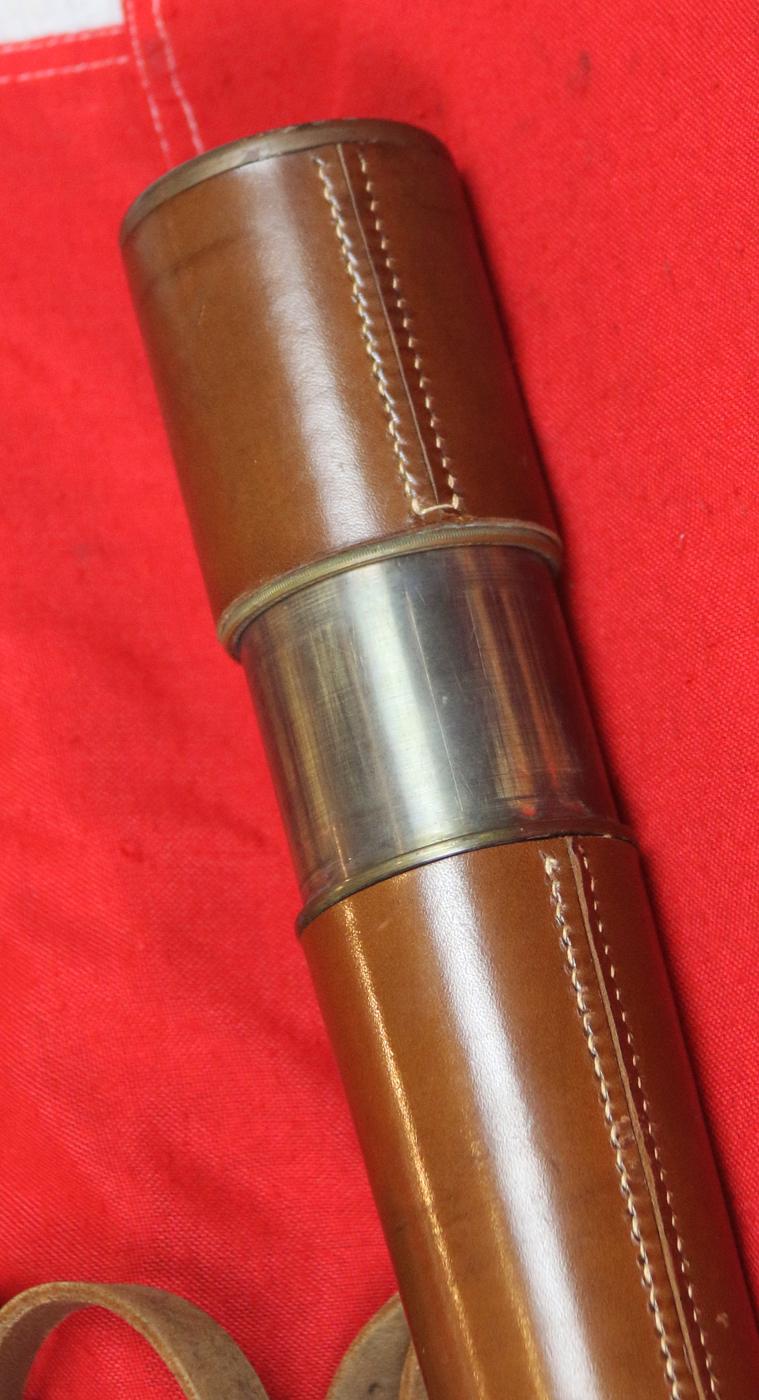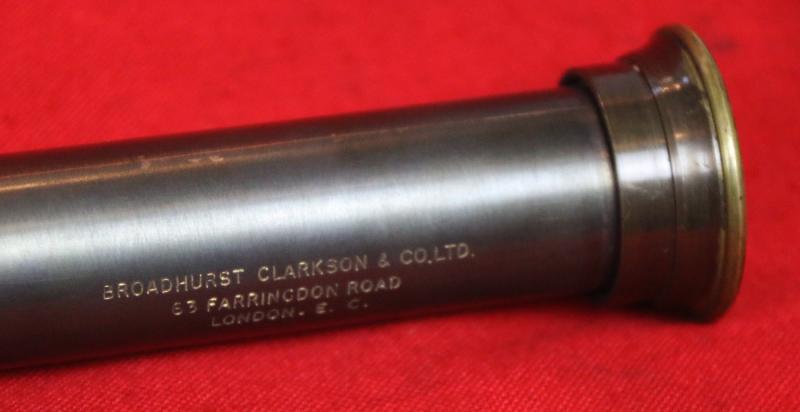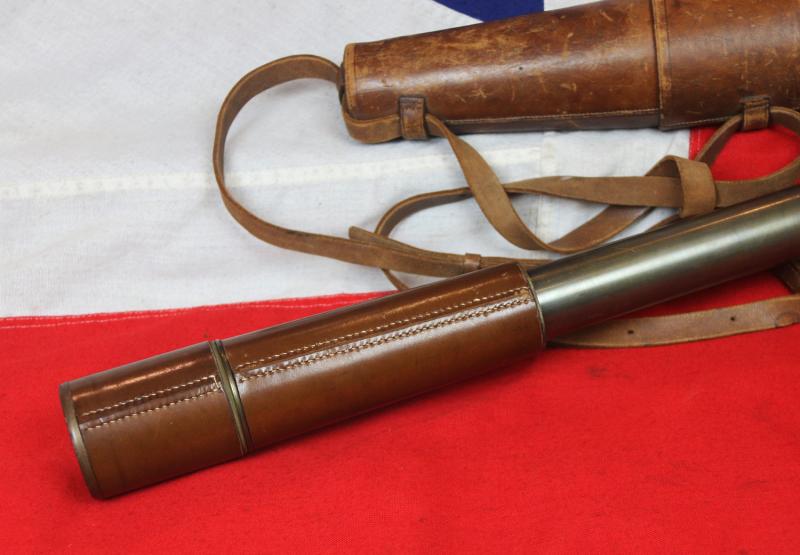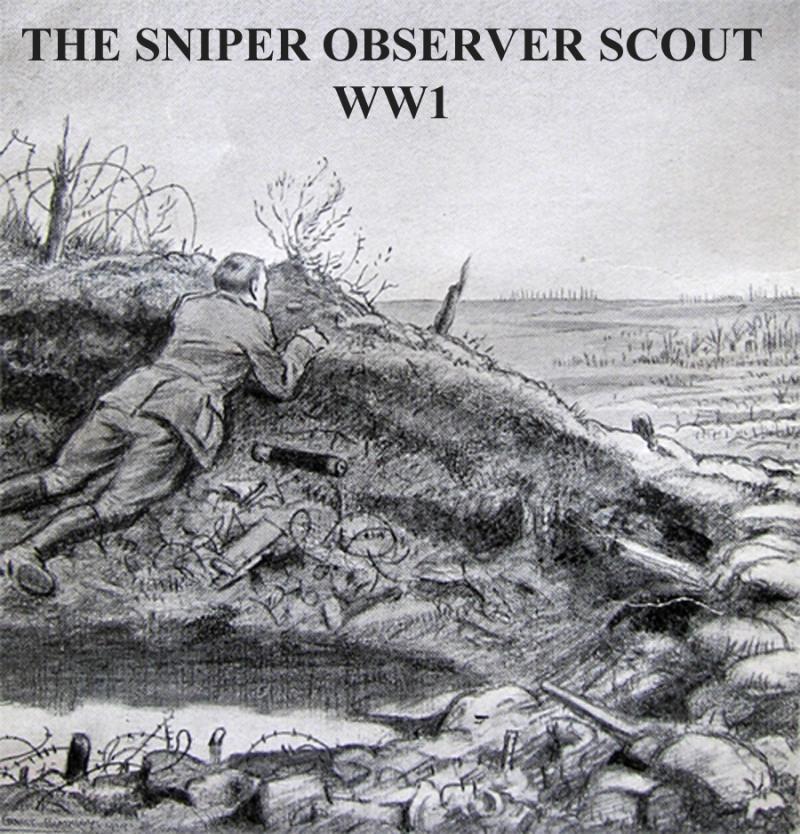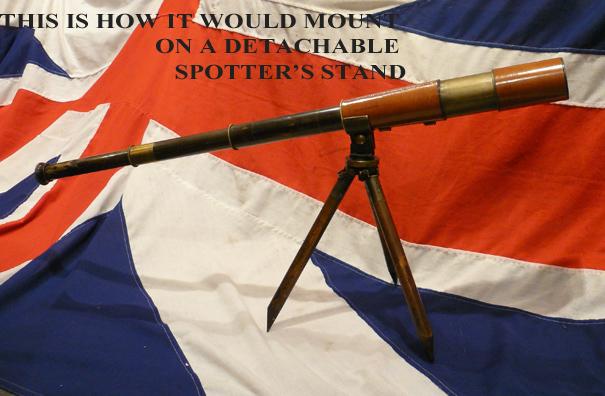A Superb WW1 & WW2 Military Officer's 3 Draw Brass Sniper Observer Scout Spotter's Telescope by Broadhurst Clarkson & Co.
Not only is it a very fine historical optical instrument collectable used in the war, it is also, still a highly functional optical instrument, and perfect for use today.
Superb condition overall with spectacular optics. 3 draw with military leather general service covering in near mint condition. Day night shade, superbly tight and crisp fit of all draws and sun/night shade. in its military issue Field Service leather case with straps. Broadhurst, Clarkson & Co: Now, since approx. 1973, called Broadhurst, Clarkson and Fuller Ltd, is one of the oldest names in UK amateur astronomy dating back from 1785.
An extract from
The Sniper-observer Scout
Sniping in France by Major H. Hesketh-Prichard
., K.C.M.G., etc.
"In the early days of 1915, in command of the 2nd Division, I well remember the ever-increasing activity of the German sniper and the annoyance of our officers and men in the trenches. I can recall the acquisition by the Guards' Brigade, then in the Brickfields of Cuinchy with Lord Cavan as Brigadier, of two rifles fitted with telescopic sights and the good use made of them. It was the experience of 1915 that impressed upon us the necessity of fighting for superiority in all branches of trench warfare, amongst .which sniping held an important position. It was therefore a great satisfaction to me upon my arrival from the battlefields of the Somme in the autumn of 1916 to find Major Hesketh-Prichard's School firmly established in the First Army area, thanks in a great measure to the support and encouragement of Lieut.-General Sir Richard Haking, the Commander of the Eleventh Corps.
I may be permitted to add my testimony that in each phase of the war, not only in the trenches, but in the field, we found the value of the trained sniper, observer and scout.
It is simply an account of some memories of sniping, observation and scouting in France and Flanders, and its purpose is to preserve, as far as may be, in some form the work and training of a class of officers and men whose duties became ever more important as the war progressed. It is in the hope that the true value of sniping and scouting will continue to be recognized in the future training of our armies, as it certainly was recognized in the later years of the war, that this book is written.
The idea of organized sniping was not a new one to me when I went out to France in May, 1915. I had been there before, in the previous March, and had seen the immense advantages which had accrued to the Germans through their superiority in trench warfare sniping.
It is difficult now to give the exact figures of our losses. Suffice it to say that in early 1915 we lost eighteen men in a single battalion in a single day to enemy snipers. Now if each battalion in the line killed by sniping a single German in the day, the numbers would mount up. If any one cares to do a mathematical sum, and to work out the number of battalions we had in the line, they will be surprised at the figures, and when they multiply these figures by thirty and look at the month's losses, they will find that in a war of attrition the sniper on this count alone justifies his existence and wipes out large numbers of the enemy.
But it is not only by the casualties that one can judge the value of sniping. If your trench is dominated by enemy snipers, life in it is really a very hard thing, and moral must inevitably suffer. In many parts of the line all through France and Belgium the enemy, who were organized at a much earlier period than we, certainly did dominate us. Each regiment and most soldiers who have been to France will remember some particular spot where they will say the German sniping was more deadly than elsewhere, but the truth of the matter is that in the middle of 1915 we were undergoing almost everywhere a severe gruelling, to say the least of it.
When I went out in May, 1915, I took with me several telescopic-sighted rifles, which were either my own property or borrowed from friends. I was at the time attached to the Intelligence Department as an officer in charge of war-correspondents, and my work gave me ample opportunity to visit all parts of the line. Whenever I went to the line I took with me, if it was possible, a telescopic-sighted rifle, and I found that both brigades and battalions were soon applying to me to lend these rifles. In this way opportunities arose of visiting the line and studying the sniping problem on the spot."
The telescope makers history stretches back to 1785. From Spectacles, microscopes, sextants and quadrants. Terrestrial and astronomical telescopes, the company had a fine tradition of craftsmanship and innovation. A large part of the business was manufacturing telescopes for the war office through both world wars with its own large factories in London.
Length Fully collapsed, 10 1/4 inches,
Extended day/sun shade fully in, 29 3/4,
Fully extended with day/sun shield fully out out, 31 3/4 inches
Telescope's weight out of the field service case, 1 kilo
Telescope's weight in the field service case, 1.3 kilos
These weights are approx. due to using our old balance scale measure.
Fully maker named and addressed. No broad arrow stamp, undated.
Code: 24595

